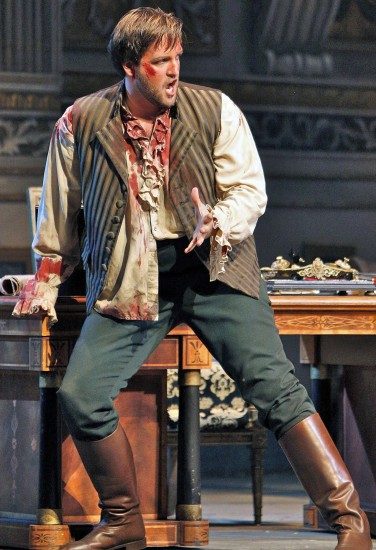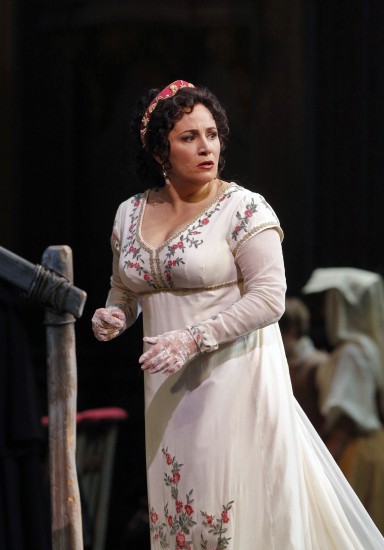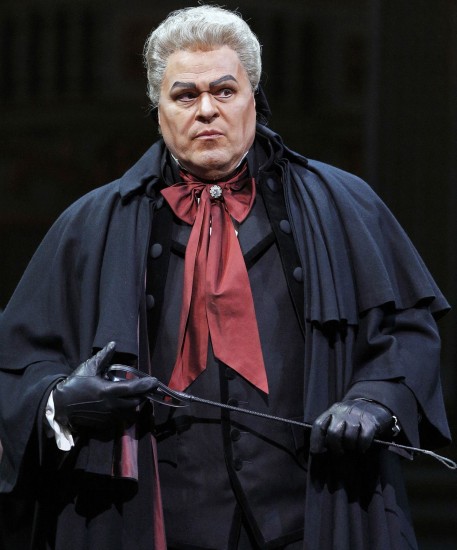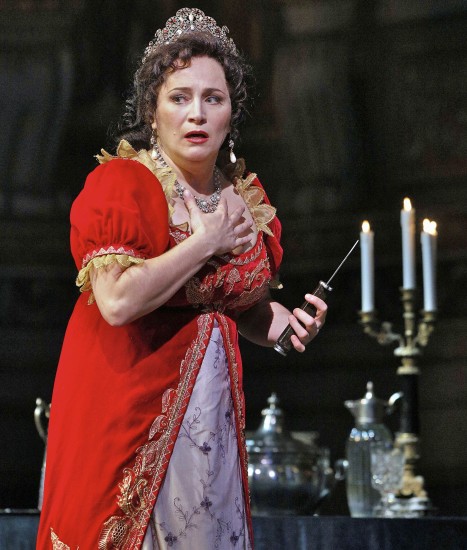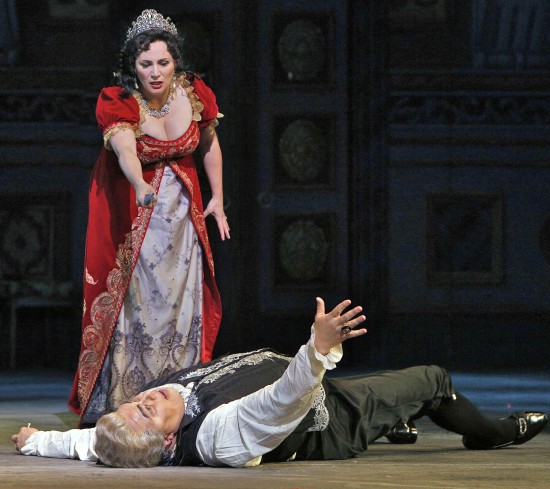Years and years ago when I was a lad of sixty or so I attended performances of the Minneapolis Symphony and the Minnesota Opera. I would then read the review of the performance in the Minneapolis paper and become extremely annoyed by the music critic (whose name I have blessedly forgotten). I would still be tingling with excitement over how much I had enjoyed a performance; he would write essentially, “Ho hum; another production of an old warhorse.” Even on the rare occasions when he liked a performance overall, he would spend most of his review telling us what he didn’t like about it.
Today, as I am faced with writing a review of San Francisco Opera’s production of Tosca, I have a bit more understanding of where he was coming from.
There are many operas, many great operas, whose principal characters are easy to know. After seeing two or three different productions, I go again to relive a pleasurable experience. Tosca is not that simple. There are three principal characters, and I go wondering how each of them will develop in this performance.
Mario Cavaradossi (Brian Jagde) is painter, patriot, and lover. Different performers (and different directors) may differ in the relative weight they give these three aspects, but all three must be there.
Floria Tosca (Patricia Racette) is more complex. She is a talented singer who is deeply religious, in love, and basically gentle but possessed with a fierce jealously. However in the climax of Act II she is faced with an irreconcilable conflict between her religion-based morals and her love for Cavaradossi and is able to summon up an ability to act ruthlessly. I am still learning about different interpretations as all these aspects interact.
The character of Baron Scarpia (Mark Delevan) can be summed in one word: EVIL – but Evil has many faces. He is power-hungry, sadistic, and lustful. Although the 2012 production of Tosca by the San Francisco Opera is the sixth different production I have seen in the past decade, it is only now that I have thought about the distinct differences between Scarpia’s emotions.
Having and using power over other people is the most essential. The power to capture, torture, and execute Cavaradossi clearly excites him and is an example of his sadism. But his approach to Tosca is both lustful and sadistic and different productions can make one or the other the prominent one.
Let me review the last few minutes of Act II. First the action itself, then from Tosca’s viewpoint, and finally from Scarpia’s. Cavaradossi is in prison and scheduled to be executed at sunrise. Scarpia has made his proposal: “Submit to me tonight and I’ll spare your lover’s life.” We pick up the action as Tosca agrees –
“But with two conditions: (1) I want to hear you issue the orders to spare him, and (2) I want a safe-conduct pass for the two of us to leave the country.” Scarpia readily agrees; he tells Tosca that there will have to be a fake execution but the bullets will all be blanks. Then he summons Spoleto (Joel Sorenson) and issues his two-faced orders: “Don’t hang him; give him a military execution, � la Palmieri.” He writes out a safe-conduct pass. She picks up a knife. He starts his rape. She stabs him and exits.
If you have read (and remember!) any of my reviews of previous Tosca productions (Royal Opera House, Opera San Jos�, or Met HD), you know that my favorite Tosca is Julia Kierstine in West Bay Opera’s 2002 production, with Karita Mattila in the 2009 MetHD a close second. My vision of Tosca, based primarily on these two interpretations, is that her self-image as portrayed in her famous aria Vissi d’Arte is a true picture: she is, indeed, a sweet young woman, deeply religious and thoroughly in love, whose actions are based on emotion rather that reasoning. As such, she cannot accept either of Scarpia’s alternatives and go on living. Even as she chooses to be raped to save Cavaradossi’s life, her emotions tell her, “I can’t allow this.” When she picks up the knife it is possibly with the idea of killing herself even though reason should tell her she is condemning her lover. It is only at the last minute that she suddenly sees killing Scarpia is a third alternative and acts on it.
Soprano Patricia Racette and Director Jos� Maria Condemi have a quite different vision. She verbally accepts Scarpia’s proposal with conditions like any other Tosca, but the instant she sees the knife she becomes a changed woman. A plan has been conceived in an instant. She picks up the knife with a gleam of triumph and sprawls on the couch in a suggestive pose with a seductive smile on her face. Her eyes seem to say, “Come and get it, big-boy; I’m all yours.”
Against a Scarpia such as Shouvik Mondle (Pocket Opera, 2004), Tosca’s strategy would not have worked. Power was his thing with sadism an integral part of it and lust a distant third. He was looking forward to enjoying her hatred and would have immediately sensed deceit in her apparent willingness.
Up to this point, Mark Delavan had not been particularly clear as to the relative importance of Scarpia’s three motives. In fact, my impression was that he was following stage directions rather than living a part. But at the imminent prospect of “making love” to this beautiful woman he was lust, pure lust. Reason left him, his gonads were wholly in charge and he almost leapt upon the recumbent figure – only to meet the firmly held dagger as the first point of contact.
Not content with that first fatal wound for which Scarpia had supplied the momentum, Tosca quickly withdrew the dagger and stuck him a couple more times, thoroughly enjoying the exercise of her suddenly acquired power.
And that’s the magic of Tosca. I wonder what the next production I get to attend will be like. Of course I like some more than others, but I can enjoy the novelty of an interpretation even if I like other interpretations better. Like the Lake Wobegon children in Garrison Keillor’s A Prairie Home Companion, “All Toscas are Above Average.”
San Francisco Opera
301 Van Ness Avenue
San Francisco, CA 94102
(415) 861-4008
sfopera.com
All photos by Cory Weaver, San Francisco Opera
This review by Philip G Hodge appeared in sanfranciscosplash.com on December 30, 2012.


